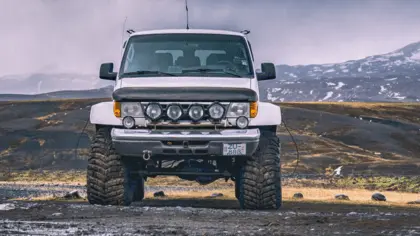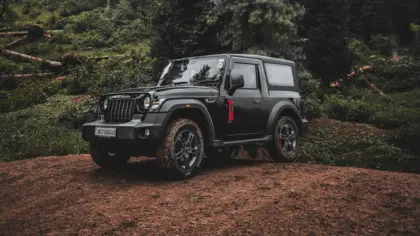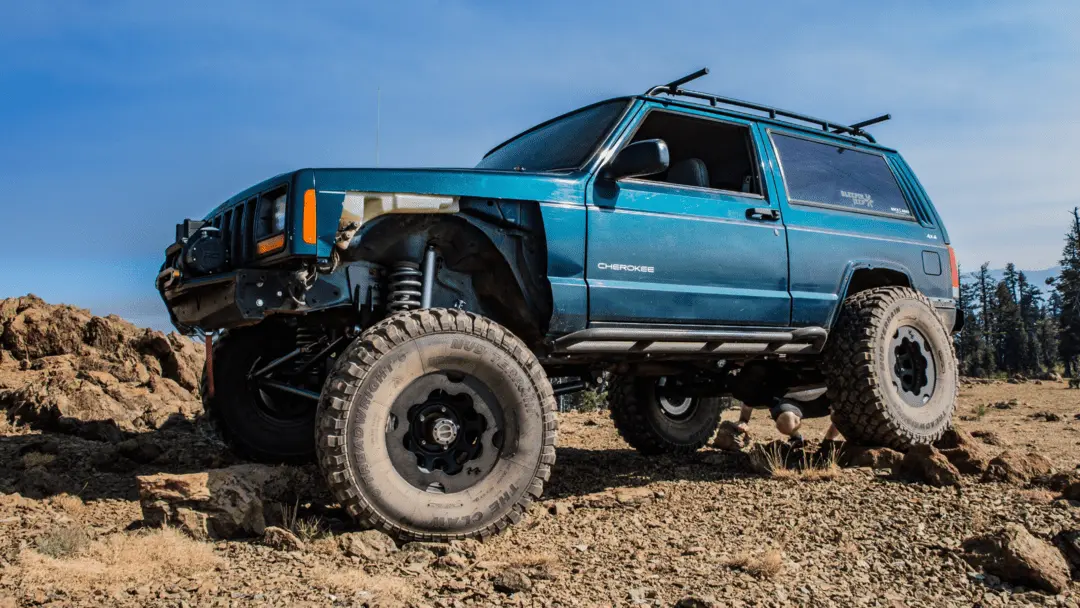There is a general consensus that wider tires offer more traction, therefore, better for off-road driving. But is it true? Are wider tires better for off-road? Then why do people choose narrow tires for icy ground or Rock Crawling? If you struggle to choose between a wider or narrower tire, go through the article to get help.
Both wider and narrower tires have their own merits and demerits. The suitability depends on several factors, such as the type of one’s vehicle, driving surface type, driver’s preference, etc. In some terrain, wider tires provide excellent performance and vice versa. But the wrong choice of the tire can significantly decrease the vehicle’s performance.
If you want to dig more about wider tires for off-road, this article might help you. The readers will know about the pros and cons of each tire, along with some FAQs. So, let’s start.
Related Article: Difference between 245 and 265 tires
Contents
The benefits of wider tires for off-road driving

Improved traction
Wider tires offer vehicles a larger contact patch, meaning the tires will have more space to enhance their grips on the ground. Due to greater traction, wider tires can offer superior rolling resistance & controllability even at high speed on off-road surfaces.
Even people can drive their SUVs on dunes without getting stuck on bottomless sand. The tire will assist in keeping the vehicle afloat on the ground. Therefore, larger contact patch has made wider tires more convenient for driving up steep inclines, and extremely rocky or muddy surfaces.
Higher stability
Improved grips indicate excellent stability. Due to higher traction and controllability, the vehicles become less likely to roll over or slip on uneven surfaces. Even when moving down a hill, a wider tire will hold the ground outstandingly.
Greater comfort
Since the broader contact patch curbs vibrations, wider tires provide a smoother ride on rocky or uneven terrain. Therefore, people will be able to drive on rough terrain for a longer time with wider tires.
Higher load-carrying capacity
Narrower tires have limited load-carrying ability due to shorter contact patches since the load pressurizes the tire through individual tread lugs. However, the pressure in wider tires is diffused over the larger contact patch area, making it capable of bearing a higher level of loads.
Impressive outlook
Wider tires offer a sporty and aggressive outlook to the vehicles that sets them apart from other vehicles.
The drawbacks of wider tires for off-road driving
- Wider tires are not fuel-efficient since higher rolling resistance requires more engine power and consume more fuel.
- Wider tires use more material to build up. So they are more costly than narrower tires.
- The wider contact patch makes it difficult to take turns with the wider tires.
- They require more trimming to be set on vehicles.
The benefits of Narrow tires for off-road driving

As aforementioned, wide and narrow tires have both advantages and disadvantages. After exploring the pros and cons of wider tires, it’s time to look at the benefits and drawbacks of narrow tires.
Pros of narrow tires
Lightweight
Narrow tires don’t need that much material to manufacture. Therefore they are lightweight and easier to take turns.
Less pressure on components
Narrow tires have less traction and rolling resistance because of their smaller contact patches, which relieve stress on the engine and other parts.
Increased traction on certain surfaces
Narrower tires can offer significantly more traction than wider ones on some surfaces. The smaller contact patch forcefully distributes the vehicle’s weight to the smaller area, giving more traction.
Cheaper
Narrow tires are more affordable than wider ones due to reduced material.
Better for icy and rock crawling
Narrower tires can save your life in situations where you need your tires to dig into the ground to prevent them from slipping, for instance, crawling on icy surfaces or over rocks. Rolling over like wider tires can cause a slip because these surfaces are slippery. But narrower tires dig on the ground. So, there are no chances of slipping over.
Cons of narrow tires
Not suitable for off-road driving
Narrow tires are not ideal for off-road driving since they can’t offer as much traction as wider tires on uneven terrain, which makes them unattractive for off-road driving. Moreover, rocks and debris can easily puncture and damage the tires.
Less stable
Narrow tires are less stable and more likely to slip or slide due to minor contact patches with the ground.
Also Read: Difference between 255 and 275 tires
Wide vs. narrow tires for off-road
Here is the sum of the advantages and disadvantages of wide & narrow tires. Let’s have a look:
| Criteria | Wider Tires | Narrow Tires |
|---|---|---|
| Contact patch | larger | smaller |
| weight | Heavy | lightweight |
| Suitable for | steep inclines, extremely rocky or muddy surfaces | icy and rock crawling |
| Traction level for off-road driving | high | low |
| Provided stability | High | low |
| Cost | Expensive | Reasonable |
| load-carrying capacity | high | low |
| Durability in off-road ride | Highly durable | Less durable |
| Fuel efficiency | Less efficient | Highly efficient |
Factors to consider when choosing tire width for off-road driving

There are several factors to consider when selecting tire width for off-road driving:
Terrain
The width of the tire often depends on the type of terrain. For instance, wider tires are best for off-road and sand surfaces, while narrower tires are ideal for slick surfaces. So, one should determine the tire’s width, focusing on the terrain type. Since wider tires offer more grips on the rough surface, people frequently choose them for off-road driving.
Vehicle type
In general, larger vehicles like trucks and SUVs can fit wider tires effectively, while narrow tires are ideal for cars.
Load Capacity
Make sure that the tires you are considering can support the weight of the car and any additional goods you plan to transport.
RELATE: How much does a GMC Acadia weigh
Tire tread
The tread pattern of the tires should be appropriate for the ground you will be driving on. For off-road driving, deep treads are ideal for increasing the tire’s traction.
Personal preference
Always give priority to your driving preferences. It is crucial for drivers that they are flexible with the tires. Otherwise, keeping control and stability during sharp turns or on uneven terrain will be challenging.
FAQ:
1. What is the perfect size tire for off-road driving?
The tire size depends on the wheel’s diameter. The basic rule is that the height of the tire will be half of the wheel diameter. Following this rule, 15/16-inch tires will be ideal for a vehicle’s 33-inch wheel diameter.
2. Are bigger tires good for off-roading?
Since bigger tires offer more traction and control over uneven surfaces, they are suitable for off-road driving. But if your wheelbase is smaller, narrow tires will suit your vehicle. So, it depends on the vehicle and surface type.
Also Read: 4 Season Tires Vs Winter Tires
Final verdict
Many people become confused before selecting tires for off-road driving and often ask, “Are wider tires better for off-road?” Therefore, in this article, I have gone over the positive and negative sides of wider tires for off-road driving. Furthermore, I have provided the pros and cons of narrow tires and a comparison between wider and narrow tires. I hope the readers will find the information practical and valuable in choosing the best tires for them.

Hello, this is Wesley Shelton, currently working in a car restoration company for over 5 years. Before that, I was a worker at a small car repair shop. As I was a car freak from a young age and worked as a professional for over half a decade, I think I now know pretty much everything about every car and its parts. To establish my name as a professional and help others by sharing my knowledge, I’ve created this website, which I work on whenever I get free time. I hope you’ve enjoyed my informative blog!

